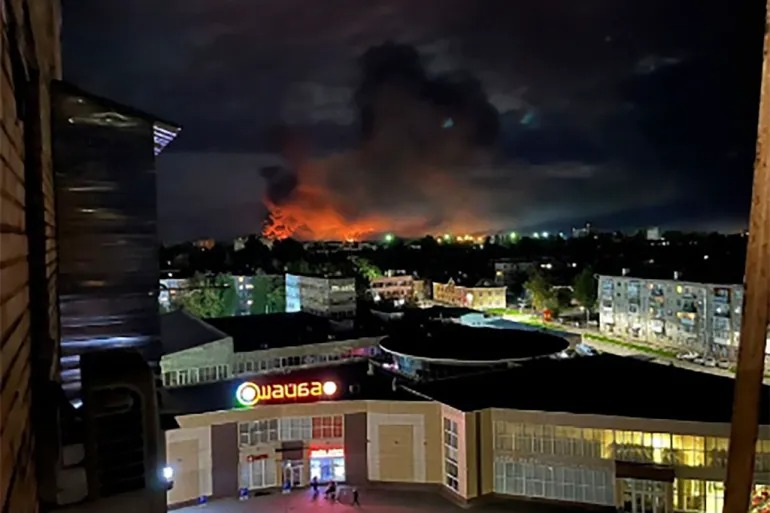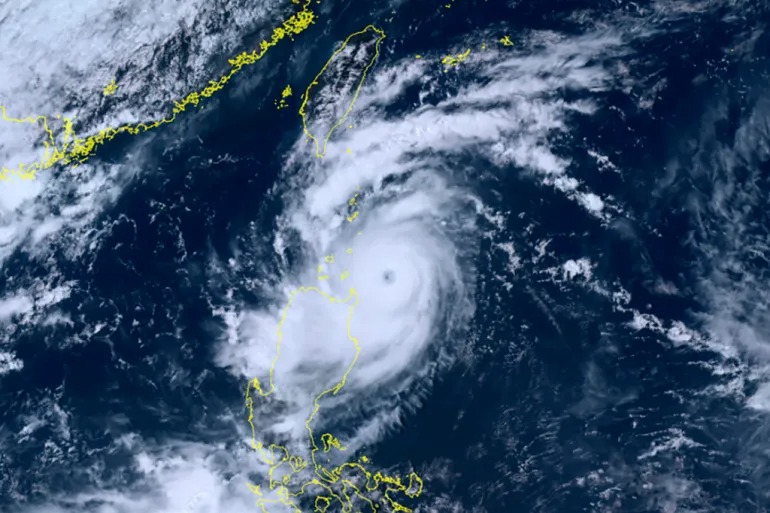Ukrainian President Volodymyr Zelenskyy announced the development of a groundbreaking long-range weapon with a remarkable range of 700 kilometers (435 miles). This revelation comes at a critical juncture in the ongoing conflict between Ukraine and Russia, as tensions escalate and new military capabilities are unveiled. Zelenskyy’s statement hints at the possibility of Ukrainian forces being behind an attack on a Russian military airport, raising the stakes in an already volatile region.
Ukraine’s Arsenal Expands Amid Rising Tensions
President Zelenskyy’s declaration regarding Ukraine’s new long-range weapon system, manufactured by Ukraine’s Ministry of Strategic Industries, has sent shockwaves through the international community. While specific details about the weapon remain shrouded in secrecy, the President emphasized the nation’s determination to extend the system’s range even further. “The range of our new Ukrainian weapons is now 700 kilometers. The task is to make this number bigger,” Zelenskyy declared via social media platform X (formerly Twitter).
This announcement came in the wake of a mysterious aerial attack on an airport in Russia’s western region of Pskov, where several military aircraft were destroyed. While Ukraine rarely confirms responsibility for attacks within Russian territory, Zelenskyy appeared to drop subtle hints, suggesting Ukrainian involvement. “The results of our weaponry – new Ukrainian weaponry – 700 kilometers away,” he affirmed during his nightly video address, reaffirming Ukraine’s intent to take its military capabilities to new heights.
Drone Offensives and Escalating Tensions
Ukraine’s recent drone offensives have added a layer of complexity to the already volatile situation in the region. A four-hour wave of drone attacks, believed by Moscow to be orchestrated by Ukraine, targeted multiple regions in Russia. This incident marked what some speculate as the most extensive drone raid on Russia since the beginning of the conflict. Ukraine’s willingness to engage in cross-border sabotage missions and attacks deep within Russian territory underscores its commitment to exert pressure on the Kremlin, both militarily and politically.
Experts suggest that these actions are part of Ukraine’s strategy to erode Russian morale and increase pressure on its commanders. The International Institute for Strategic Studies (IISS) described the goal as bringing Russian forces to a tipping point where both combat power and morale begin to wane. This calculated approach aims to capitalize on Ukraine’s counteroffensive, launched in June, which has gradually eroded parts of the Russian front line.
Advancements Near Russian Defensive Lines
In recent days, Ukrainian forces have reported significant advancements, pushing toward the primary Russian defensive lines near the village of Robotyne in Ukraine’s Western Zaporizhia region. They are currently advancing between the villages of Novopokropivka and Verbove, maneuvering to navigate through anti-tank ditches and concrete pyramids known as “dragon’s teeth” that constitute Russia’s main fortifications, even visible from space. A successful breakthrough at this point would provide a critical test of Russia’s deeper defenses, potentially revealing vulnerabilities and lower levels of minefields than previously encountered.
Ukraine’s Deputy Defence Minister Hanna Maliar reported unspecified successes near Novopokropivka, suggesting that Ukrainian forces are making headway. The city of Bakhmut in the east, captured by Russia earlier in the year, also witnessed heavy battles as Ukrainian forces strive to regain control. Commander of Ukraine’s ground forces, Oleksandr Syrskyi, highlighted a “positive dynamic” near Bakhmut, indicating that Ukrainian troops are making strategic strides in their efforts to confront the Russian offensive.
As Ukraine’s arsenal expands, the conflict’s dynamics continue to evolve, heightening concerns and tensions both regionally and internationally. The development of this new long-range weapon raises questions about the potential consequences and shifts in power dynamics in this ongoing struggle for control and influence in Eastern Europe.
















